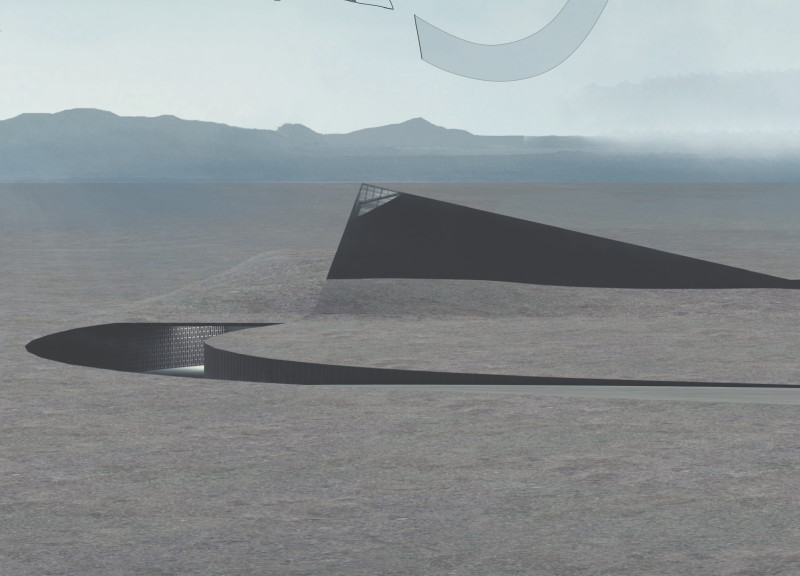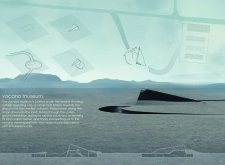5 key facts about this project
The Volcano Museum is located within the landscape surrounding the Hverfjall volcano. It serves as a space for education and exploration, allowing visitors to connect with the natural significance of the site. The design aims to create an experience that merges architecture with geology. It does this by using the land's features to enhance the overall journey through the museum.
Design Approach
The museum is designed with a pathway that descends as visitors enter, leading them into the structure. This entrance mirrors the feeling of going below the surface, much like exploring a cave. Inside, an underground exhibition area awaits, offering insights into the volcanic landscape. There is also a central courtyard that provides a gathering space where people can connect and engage with the museum's offerings.
Materials and Construction
The materials chosen for the museum are practical and visually appealing. The roof utilizes 8mm toughened glass and a 16mm cavity, supported by two layers of 10mm laminated safety glass. This combination lets natural light illuminate the interior while maintaining a clear view of the outside environment, enhancing the visitors’ experience.
Foundation Details
The foundation is built using a 20mm shale plate, 100mm cavity with bituminous sheeting, 150mm rigid foam insulation, and 140mm combined board. This layered system ensures effective thermal performance and moisture management, both crucial for handling the specific conditions of the site.
Viewing Platform
One of the key features is the volcano viewing platform. This elevated area provides visitors with an opportunity to take in the views of the Hverfjall volcano. It creates a feeling of connection between the indoor exhibits and the outdoor landscape. Visitors can appreciate the striking scenery, which makes their experience of the museum more meaningful and memorable.






















































